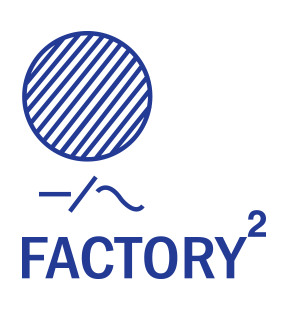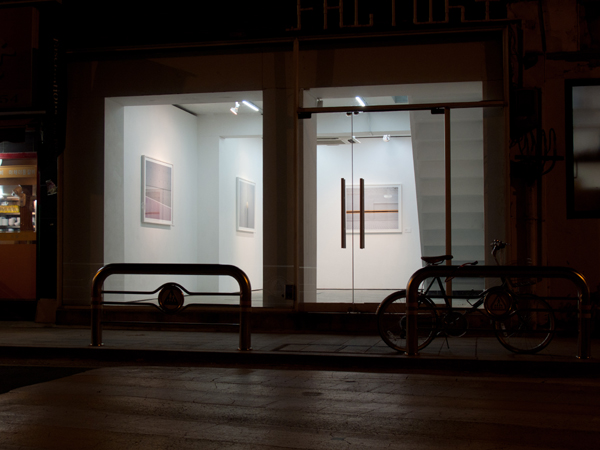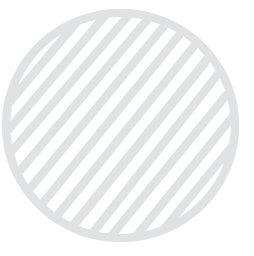| FASCINATIONS FASCINATIONS |
| 2010.11.20_12.12 |
FASCINATIONS
by 에릭 페리아르 Eric Perriard
전시개요
가끔 무의식적으로 무언가를 뚫어지게 쳐다보는 나를 발견한다. 바로 그 순간 ‘매혹’이 탄생하는 것이다. (그 대상은 그 어떤 것일 수도 있다. 예를 들자면, 건물의 기둥, 소화전 등등)
아마도 그 대상의 본질과 그것이 놓인 혹은 위치하는 방식의 묘한 조합이 내 안에 ‘매혹’이라는 불을 지피는 것이라 생각하다. 또, 이런 ‘매혹’이라는 감각적 체험은 ‘장소성’이 더해져 한층 밀도가 강해지는데, 내가 ‘발견한’ 장소들은 대게 서울의 뒷골목이나 구석진 곳이다. 나는 그곳에서 발견한 ‘작은 장면’을 ‘있는 그대로’ 혹은 ‘나에게 보여진 그대로’ 사진으로 찍는다. 그 ‘우연의’ 장소를 발견하는 것은 마치 현실을 뛰어 넘는 초현실적 경험 같은 것으로, 인공적이면서도 미니멀한 환경에서 어떤 물체가 우연히 부드러운 빛 속에 풍덩 빠진 것 같은 내 상상 속의 한 장면이 현실의 눈 앞에 나타난 것과 같은 느낌이다.
그럼에도 불구하고, <Fascination> 연작은 단지 특정한 ‘장소’에 놓인 ‘물체’를 찍고자 하는 것이 아니라, 그 물체와 연결된 ‘매혹’이라는 감각적 경험에 주목하는 작업이다. 매혹이라는 것은 과연 무엇일까? 인간 개개인의 숨겨진 존재성을 드러내주는 그 무엇인 것일까? 이 사진 연작은 나에게 ‘매혹’에 대해 지속적으로 생각하고 경험케 하는 기회를 주었다. 그러나 왠지 내가 사진 속 그 물체들을 바라보면 볼수록 그것들은 더욱 더 신비스러운 존재가 되어버린다.
There are times I find myself compulsively staring at something without knowing why. A fascination is born (it can be anything: a pillar, a fire hydrant, a tire). I believe that the combination between the nature of the object and the way it is displayed kicks off my fascination. My gaze is also nourished by a sensation that can arise on the field. The places that I found (tiny scenes enclosed in the streets of Seoul, strictly photographed as they appeared to me) seem to transcend reality as if I am imagining these little absurdities: random objects in an artificial and minimalist environment, plunged in a soft light.
This surreal atmosphere opens a door to a mental territory where things look totally independent in their own space. However, the purpose of this work was not only to photograph the object, but also to describe the fascination linked to it. What does a fascination mean? Does it reveal the existence of a hidden part in an individual? These photographs give me the opportunity to experience this fascination again and again, but the more I look at these objects, the more mysterious they become.
작가소개
한국에서 태어나 (b. 1980) 6세에 프랑스로 입양된 후 엔지니어링을 전공하고, 다국적 기업과 프랑스 정부 기관 등에서 근무한 바 있다. 2006년 프리랜서 사진작가로서의 삶을 선택하고 직장을 그만두게 되면서, 주로 감정, 직관, 현실 등의 키워드로 사진작업을 해오고 있다. 그는 대자연의 풍광이나 스펙터클한 광경을 사진에 담기 보다는 자신의 주시하며 관찰해온 대상/피사체의 멈춰진 한 순간을 포착하여 사진에 담고, 그 순간에 가진 작가의 감각적 경험이나 직관적 체험을 관객에게 전이시키고자 시도한다. 그는 하나의 개체일 뿐이지만 ‘다양한 감성과 미지의 여러 가지 요소로 가득 채워져 있는’ 인간이라는 존재를 매우 보편적이면서도 단순화된 시각으로 표현하는 사진작업을 계속 시도해나가고 있다.
에릭 페리아르는 세계적으로 전시와 출판을 병행하고 있다. 최근에는 제주현대미술관에서의 전시와 말레이시아국립미술관 (쿠알라룸루르), 러시아 사진미술관 Metenkov House (예카테린부르크) 등지의 그룹전에 참여한바 있으며, 2009년과 2010년 프랑스 올랑 미술관과 뤼트뵈프 시립미술관 (클리쉬, 프랑스)에서 도시인의 모습을 담은 <Urban Soul> 시리즈로 개인전을 가진바 있다.
Born in South Korea in 1980, Eric Perriard was adopted at the age of six and raised in France. After graduating in Engineering and working for a multinational, he quit his job to become a freelance photographer in 2006. Emotions, instinct and reality are key components in his photography. However, his work never depicts spectacular scenes, but rather still tableaux in which he can transfer his interrogations to the audience. He is in search of a generic and simplified vision of a human being, which is merely an entity, but filled with sensations and the unknown parts of themselves. Eric Perriard’s work has been awarded by the French Ministry of Youth, exhibited and published internationally (recent shows in 2009 and 2010: Jeju Museum of Contemporary Art in Jeju Island, South Korea - National Gallery of Malaysia in Kuala Lumpur - Museum of Photography Metenkov House in Yekaterinburg, Russia ? Solo show at the Museum of Fine Arts in Orleans, France ? Solo show at the Galerie Municipale du Rutebeuf in Clichy, France). He now lives and works in Seoul, South Korea.
Fascinations
By Eric Perriard
프랑스 ―나는 프랑스에서 자랐다― 오를레앙 미술관의 큐레이터로부터 그 지역 출신 추상화가의 책을 한 권 받았다. 그 책의 첫머리에서 아직까지도 내게 영감을 주는 글귀를 읽었다: “예술 작품은 사람의 존재, 영혼의 깊은 곳으로부터 나온다. 개인의 의지는 결코 여기에 영향력을 행사하지 못한다. 예술은 포착하기 어려운 모든 것에 열려있다. 어느 누구도 자신의 작품이 무엇을 내포하고 있는지 모른다고 한 소설가 앙드레 지드의 말은 옳다. 내 생각에는 의식적으로, 혹은 합심하여 이루어진 어떤 것도 피상적이며 손쉽고 가치 없는 것이다”(올리비에 드브레 Olivier Debre, 1920-1999).
내가 이미지뿐만이 아니라 추상화를 감상할 때 갖게 되는 비슷한 내면적 경험을 어떻게 만들어내는가를 생각해보았다. 사진을 찍을 때, 나는 “추상적”이라는 말을 강조하는 대신에 내가 가장 신뢰하는 것, 즉 본능을 사용했다. 본능을 따라가다 보면 나는 내가 창조적으로 무엇을 하고 있고, 왜 내가 무언가에 의해 끌리는지를 생각해보지 않게 된다. 이 프로젝트를 하는 동안, 나는 구체적인 것들을 통해 자기성찰이나 명상이나 감정 같은 무형적인 것으로 향하는 문을 열려고 했다.
언제나 그렇듯이, 내 작업은 한국의 이곳 저곳을 오랫동안 걸어 다니는 것으로 시작되었다. 한국에서 태어났지만, 난 여섯 살에 입양됐고, 20여 년이 지난 후에야 돌아왔다. 이런 사실이 영감을 자극하겠지만, 내가 이곳의 풍경과 색채에 친밀감이 든다는 사실이 더욱 중요하다. 이런 한국과의 특별한 인연이 내 비전에 영향을 주고 있다: 비록 나와 관련이 있기는 하지만 이곳을 타국이라는 느낌으로 바라보고, 그렇기 때문에 이곳의 어떤 것도 식상하지 않다.
다른 그 무엇보다 나를 사로잡은 이 이국적인 느낌은, 이곳의 현대적인 혼돈 같은 것이라고 생각이 된다. 어딜 둘러보든 간에 말쑥하지 않은 혼란을 보게 되지만, 그럼에도 이 속에는 대조되는 것이 있다. 파스텔 톤의 건물들과 일상적인 대상이 내 환경의 특별함을 더해준다. 한국적 생활방식의 모습과 결합되면서, 지금 내가 속한 환경이 굉장히 시적이고 감성적임을 깨닫는다. 이 풍경들과 그 속에 담긴 것들은 내게 호의와 순수함을 떠올려준다. 가지고 있다. 이 진실함을 정의하자면, 너무 상징적이거나 화려하거나 너무 낡거나 너무 새롭지도 않으면서 내가 가장 편안함을 느끼는 것에 가장 근접해있다.
프로젝트의 초반부에는 나의 작업 방식을 기록적인 관점에 의존하려 했었다. 나는 그저 내 주변을 포착하고, 한국의 풍경과 나의 개인적 연결고리를 설명하려고 했었다. 하지만 거리를 걷다가, 만나는 일상적인 세세한 것들과 대상들에 매료되기 시작했다. 이런 것들이 도시적인 것들을 설명하듯 담아내는 것보다 훨씬 매력적임을 깨달았다. 나는 멀리서 찍는 것부터 시작해 피사체에 좀 더 가까이 다가갔다. 이곳의 평범한 풍경들로부터 더욱 ‘매혹’이라는 좀 더 보편적인 개념을 보여주는 마음속의 풍경을 만들어 나갔다. 나는 그 매혹이라는 감정이 어떻게 생겨나며 무엇을 내포하고 있는지 무척 궁금했다. 그래서 그 감정을 옮겨내고 해석할 수 있는 타블로(tableaux)를 만들기 시작했다.
나는 무언가를 이유 없이 응시하고 있는 나 자신을 발견할 때, ‘매혹’을 경험한다. 대상의 본질과 분위기, 그리고 그것을 나타내는 방식의 결합이 매혹을 불러일으키는 것이다. 그러나 무엇보다 중요한 것은 이러한 포착할 수 없는 섬세한 결합이 이 대상이 개별적으로 존재하는 현실로부터 자연스럽게 나와야만 한다는 것이다. 왜냐하면 신비감을 살려내기 위해서는 미지의 무언가를 직면해야 하기 때문이다. 당연히, 내가 매혹을 만들어낼 수는 없다. 운이 좋으면, 나는 매혹적인 무언가를 가까이에서 마주치기라도 해서, 독자들에게 전달하기 위해 사진을 찍을 수는 있을 것이다. 그래서 내가 사는 곳 서울의 거리에 둘러싸인 자그마한 장면들에 멈춰 서서 내게 보이는 대로 그대로 사진으로 담아내었다.
이런 의미에서 이 프로젝트는 기록이라는 원래의 목적을 약간은 지켰다. 현실과의 결정적 연결고리를 유지하고 있지만, 그대로 표현하지는 않음으로써, 즉, 현실을 작가의 창조적 목적에 사용하고 있기에, 다큐멘터리는 사진의 힘을 발휘하기 좋은 기회이다. 이 특별한 작품 시리즈를 위해 작품은 큰 프린트로 만들어 작은 금이나 얼룩 같은 세세한 것들까지, 불완전한 것들까지 다 볼 수 있게 할 것이다.
이런 것들은 사물이 매혹이 되기 전의 그 사물의 삶의 증거이며, 그 미지의 상태에 대한 궁금증을 부채질한다. 사진들은 그 매혹을 다시금 느끼게 해주지만, 보면 볼수록, 대상들은 점점 더 신비해지기만 한다.
사물에 대한 궁금증은 이 프로젝트 이전부터 시작되었다. 내 공부에 대한 뚜렷한 기억을 더듬어보면, 문학과 철학 선생님께서 어떤 연습을 하라고 하셨던 것이 생각난다: “돌멩이 따위의 평범한 물건을 관찰할 때라도 네 자신의 존재를 잊어버릴 때까지 해야 한다.” 이런 초현실적인 상태에 접근해간다는 생각은 언제까지고 내 맘속에 자리 잡고 있었던 것 같다. 이 사진에서 나타나는 분위기는 사물이 자신 만의 공간 속에 온전히 독자적으로 자리 잡고 있는 어떤 정신적 영역으로 향하는 문을 열어준다. 사물은 우리의 이해나 해석을 필요로 하지 않고 이를 초월하여 그저 존재하는 듯하다. 이 단계에서 매혹이란 것은 날것인, 접근할 수 없는 현실의 숨겨진 어떤 층을 가리키거나, 아니면 각자가 가진 원래의 생생한 혼을 반영하는 게 아닐까.
묘사가 불가능한 영역을 촬영하면서, 나는 인간 존재의 특유한 그리고 단순화된 비전을 계속 탐색한다. 우리는 감각으로 채워져 있기도 하지만, 우리 자신에 대해 스스로 깨닫지 못한 부분들도 있다. 단순함에 대한 이런 갈망은 현재의 세계와 정신 없이 돌아가는 세계의 본질에 대한 반응이다. 이 작업을 위해 내가 선택한 미학은 이런 반응과 일치한다. 나는 미니멀리스트적 기하학과 집중적인 구성을 사용했는데, 이런 것에 언제나 돌이킬 수 없을 정도로 나는 마음을 뺏긴다. 빛의 선택이 역시 중요했는데, 언제나 부드럽고, 확산되며, 미묘한 빛을 찾으려 했다. 하지만 가장 어려운 작업은 단순함 속에서 깊이를 찾는 것, 즉 매혹 자체를 찾아내는 것이었다. 결국엔 이 매혹을 직접 경험함으로써, 나는 우리의 삶을 구성하는 대상들을 보는 방식에는 뭔가 특별한 것이 있음을 알게 되었다. 이러한 시각은 매일 매일의 지각뿐 아니라 우리의 조건, 그리고 아마도 우리의 삶의 궤도까지도 깊이 영향을 줄 수 있다.
The Curator of the Fine Art Museum of Orleans - France, where I grew up, once gave me a book of an abstract painter from the area. Among the first pages, I found a quote which has been an important thought-provoker: “Art comes from the depths of one’s being, of one’s soul. Individual willpower has no sway over it. Art is expected to open on to all that is elusive. Gide rightly says that one does not know what goes into one’s work. I indeed think that anything done consciously or concertedly is superficial and facile.” (Olivier Debre, 1920-1999).
I have thought about how I could produce not only an image, but an inner-experience similar to when I observe an abstract painting. Instead of focusing on the word “abstract”, I used what I trust the most when I take photographs: instinct. Following my instinct takes away my understanding of what I am doing creatively and why I am aesthetically drawn to one thing or another. In this project, I tried to use the tangible to open a gate to intangibles such as introspection, contemplation or feelings.
The first step of the process was, as always, to walk for countless hours in my Korean surroundings. I was born here, left at the age of 6 as an adoptee and came back more than 20 years later. This surely triggers inspiration, but more importantly, here I feel very close to the landscapes and colours. This specific relationship with South Korea has an impact on my vision: I see this land with a taste of exoticism even though I am related to it, and nothing of it ever becomes boring for me.
I guess that one aspect of this exoticism, which captivates me more so than others is its contemporary chaos. Wherever I look, I find a rough mess. But there is contrast amongst it. The pastel tones used for architecture and daily objects contribute to the specialness of my environment. Mixed with signs of Korean lifestyle, I find these settings very poetic and emotional. These landscapes and their content remind me of good-will and innocence. Their definition of genuineness is the closest to where I feel comfortable, having nothing too iconic, spectacular, old or new.
At the beginning of the project, I had a more documentary point of view in my method. I wished to capture my surroundings and describe my personal link with these Korean landscapes. However, by walking the streets, I began to be attracted by everyday details and objects that I came upon. I realized that these objects were more appealing to me than collecting urban descriptions. I began by shooting from a far off distance then moved in closer to the subject. From these ordinary landscapes, I started to create mental landscapes, which described a more universal concept: a fascination. I was interested in exploring how the fascination was born and what it implies. So I began by creating still tableaux which could transfer or interpret these sensations.
I experience a fascination when I find myself compulsively staring at something without knowing why. It is the combination between the nature of the object, the tones and the way it is displayed that can kick it off. But most importantly, this very elusive and fragile combination needs to be born naturally from the reality of this object’s individual existence. The main reason is because I have to face something unknown so that the mystery can come to life. By definition, I can’t make a fascination. If I am lucky, I can only encounter one intimately and take a photograph in order to transfer it to the audience. It is why I stopped at tiny scenes enclosed in the streets of Seoul, where I live, and strictly photographed them as they appeared to me.
In this sense, this project kept some of its original documentary purpose. This is where a photograph can be so strong: by keeping its crucial link to reality, but without necessarily portraying it; by using reality to serve the photographer’s creative purpose. So for this particular series of images, the final prints will be large, so that each detail - the cracks, the stains; the imperfections are visible.
These are evidence of the object’s life before it became a fascination and fuel its unknown. These photographs give me the opportunity to experience these fascinations again and again, but the more I look at these objects, the more mysterious they become.
My curiosity in objects was born before this project. A distinct memory from my studies had a literature and philosophy teacher suggest an exercise: to observe an ordinary thing like a stone and do so until we forget ourselves. I guess this idea of approaching a surreal state never quite left my spirit. In these photographs, the specific atmosphere opens a door to a mental territory where things look totally independent in their own space. They seem to exist beyond our need of understanding and interpretation; they just exist. At this stage, I wonder if a fascination points to a hidden layer of reality, raw and inaccessible, or if it reflects a raw soul of an individual.
By photographing indescribable spaces, I continue to search for a generic and simplified vision of a human being. We are filled with sensations but also an unknown part of ourselves. This thirst for simplicity is a reaction to our current world and its frenetic nature. The aesthetic choices I made for this work are consistent with that direction. I used minimalistic geometry and a centred composition to which I always feel irremediably attracted. The choice of light was also key, always soft, diffuse and subtle. But the hardest challenge was to find depth in this simplicity: the fascination itself. Finally, by experiencing these fascinations, I realised that there is something special about how we see the objects that we construct our lives around. This view can deeply affect not only our day to day perceptions, but also our condition, possibly even our trajectory.
-
전시개요
전시제목 : Fascination
전시작가 : 에릭 페리아르 Eric Perriard
전시일정 : 2010년 11월 20일 (토) - 2010년 12월 12일 (일)
전시시간 : 화-일 오전11시 - 오후6시 (매주 월요일 휴관)
전시문의
갤러리 팩토리
전화 : 02-733-4883
이메일 : master@factory483.org
웹사이트 : www.factory483.org
Overview
Title : Fascination
Artist : Eric Perriard
Duration : Nov. 20, 2010 - Dec. 12, 2010
Hours: 11:00 a.m. - 6:00 p.m. (Closed on every Monday)
Inquiry
Gallery Factory
Tel : 02-733-4833
E-mail : master@factory483.org
Website : www.factory483.org
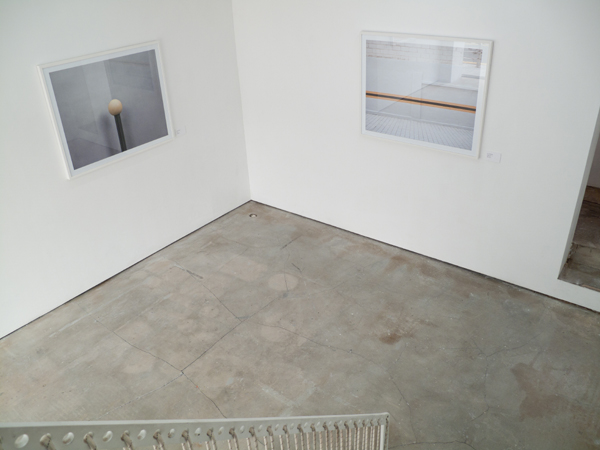
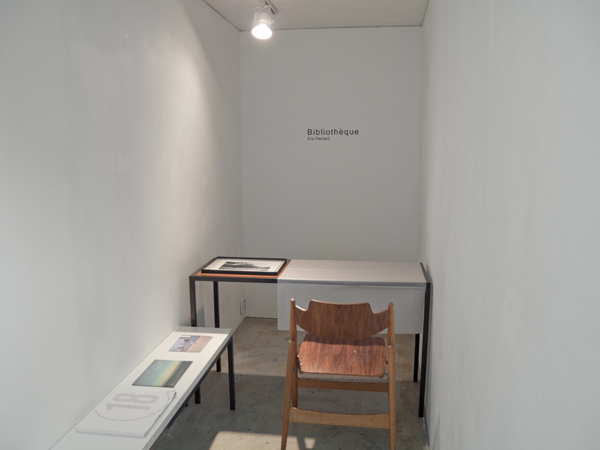
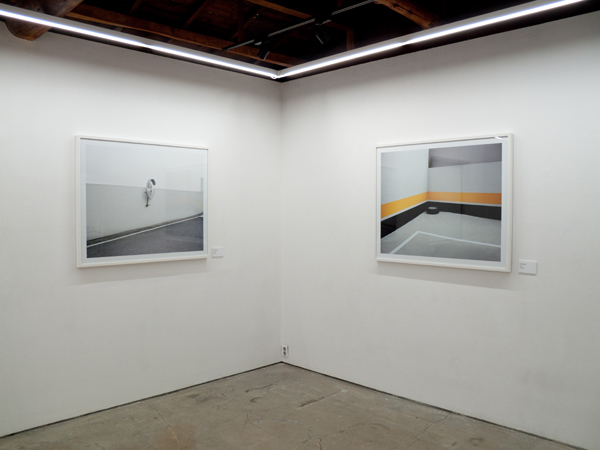
- 부대 프로그램
-
-

- 보이는 것과 보이지 않는 것
- 2006.5.19_6.11
-
-
-
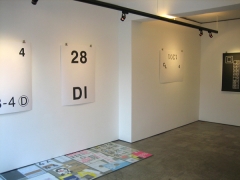
- (최)슬기와 (최성)민의 (넓은 의미에서) 타이포그래피
- 2006.4.21_5.13
-
-
-

- People Call Me Madame Owl
- 2006.3.24_4.15
-
-
-

- 2006 이주영 프로젝트 <잃어버린 언어를 찾아서>
- 2006.2.25_3.19
-
-
-

- 한글꼴이 걸어나오다
- 2005.11.15_12.4
-
-
-

- Tinker
- 2005.10.12_11.6
-
-
-

- 마음
- 2005.9.3_9.25
-
-
-

- Surreally Real! : 미술, 혹은 마술
- 2005.6.15_6.30
-
-
-

- 고가현 개인전 <사람-형태소>
- 2005.1.14_3.13
-
-
-

- 이면공작裏(異)面工作 시나리오
- 2005.1.14_
-
-
-

- Park +
- 2004.11.5_12.5
-
-
-

- 하늘 공연장 Open Theater
- 2004.9.17_10.20
-
-
-

- My Style Your Style
- 2004.8.27_9.12
-
-
-

- 한여름 밤의 꿈
- 2004.8.10_8.22
-
-
-

- 우울증에 걸린 집
- 2004.7.9_7.31
-
-
-

- 나는 니가 행복했으면 해
- 2004.6.11_6.27
-
-
-

- 목성
- 2004.4.28_5.23
-
-
-

- 엔트로듀싱
- 2004.3.26_4.18
-
-
-

- A Diary: Typographic Days
- 2004.2.20_3.21
-
-
-

- Window Exhibition
- 2003.11.25_12.14
-
